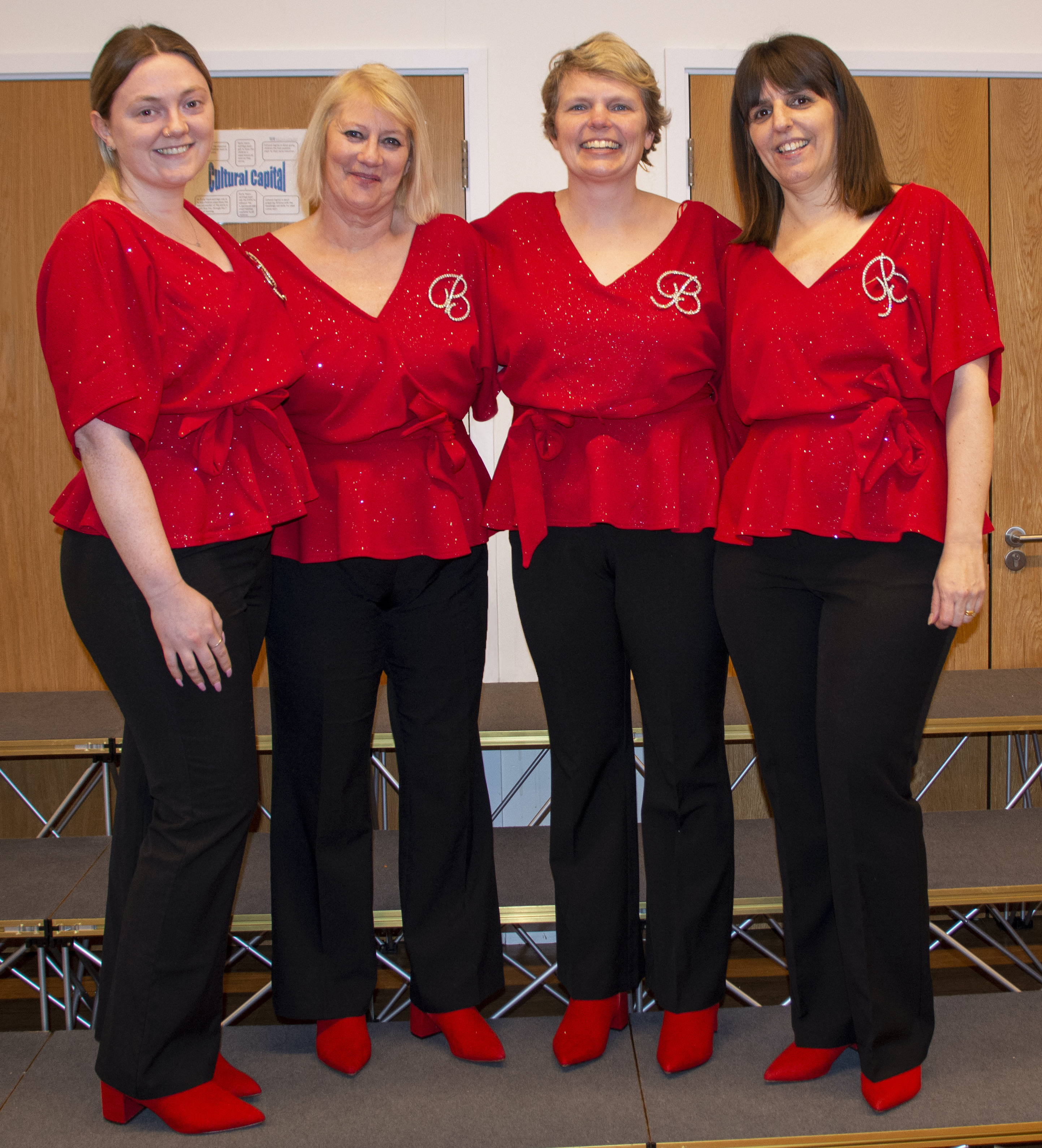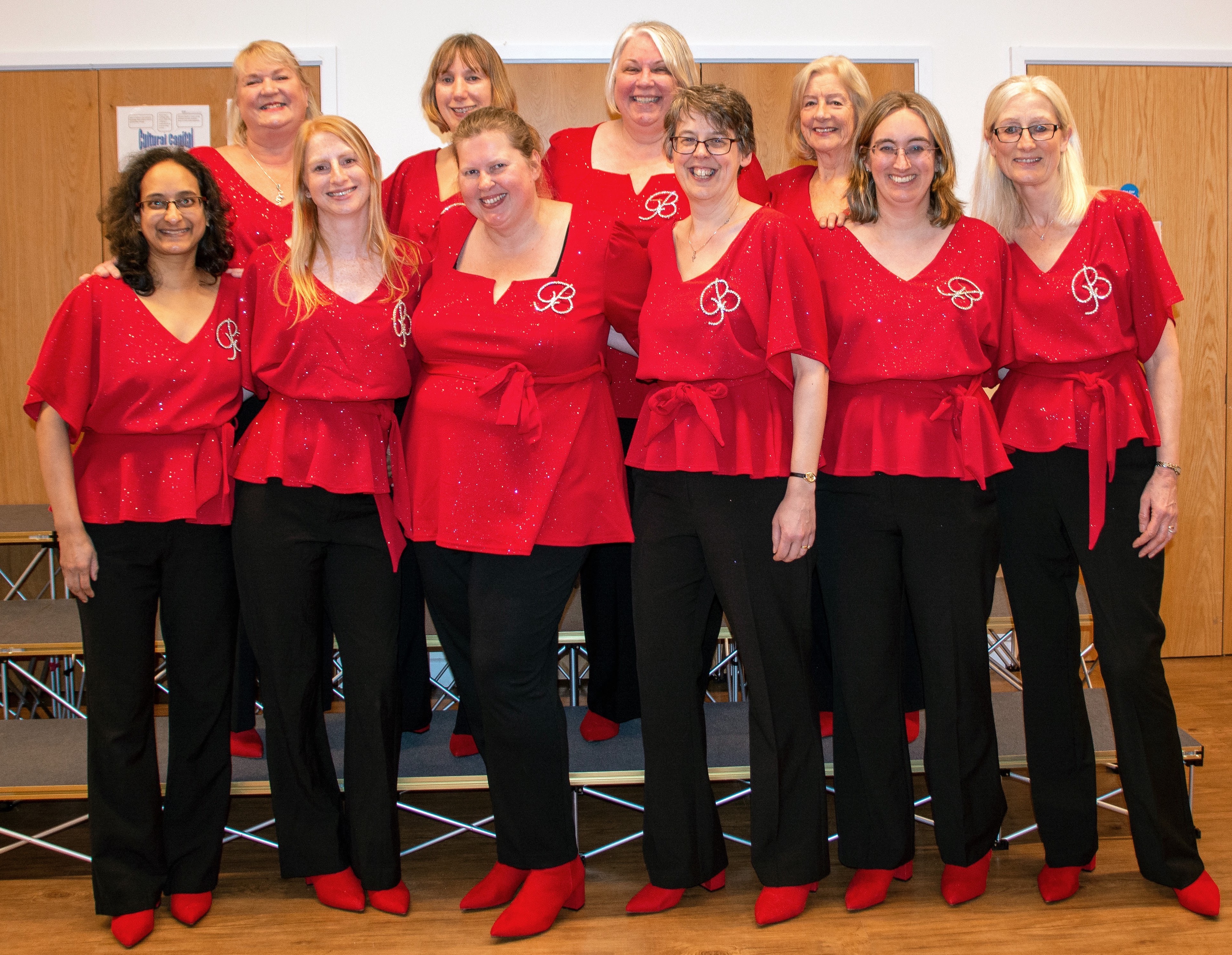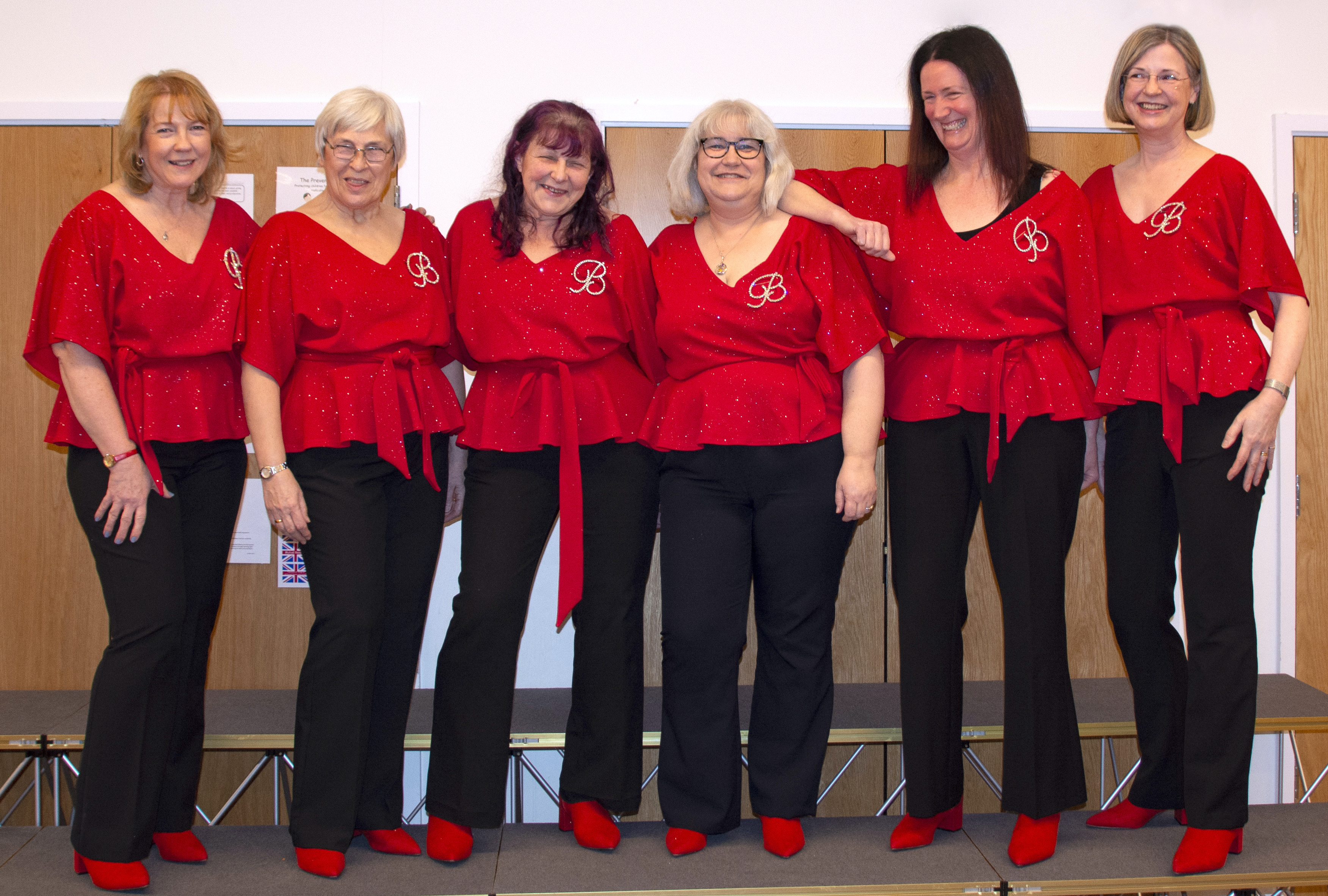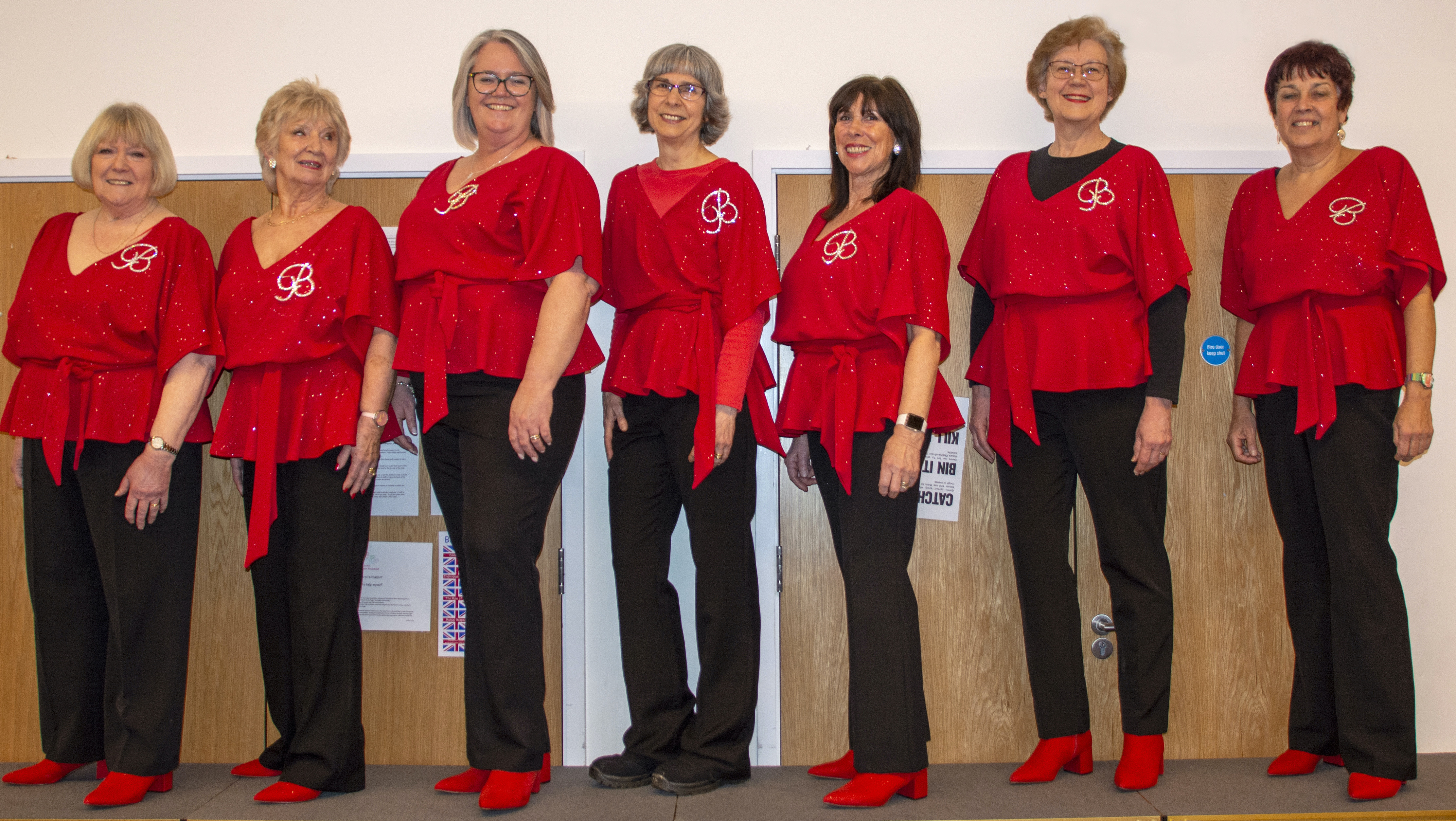To make use of an RSS feed, you need some "feed reader" (or "aggregator") software. Most modern web browsers have feed readers built in.
The RSS feeds for The Barberettes are listed below...
The Barberettes upcoming events:
https://www.the-barberettes.co.uk/dbaction.php?action=rss&dbase=events
The Barberettes news:
https://www.the-barberettes.co.uk/dbaction.php?action=rss&dbase=uploads
About The Barberettes

As The Barberettes we are a a lively and entertaining acapella chorus which sings in the barbershop style - ie the melody (or tune) is in the middle of the arrangement. We were founded in 1976 and are conducted by our very talented Music Director, Emma Lelliott. We rehearse weekly in Earley, near Reading, and perform regularly around Berkshire and beyond. Our repertoire spans 100 years of popular music and is constantly evolving.
History
The Barberettes began life singing as female Barbershoppers. Barbershop singing is four-part unaccompanied close harmony with three of the voices harmonising with the melody. It's unique sound is created by using a predominance of specific chords in the arrangements, which are usually of popular songs from throughout the 20th century. Barbershop singing is one of the trickiest yet most rewarding accomplishments of a vocal ensemble - you are singing a song as a Lead with three other harmonizing sections and as each section hits the perfect pitch the audience hears a wonderful overtone vibration - a resonant ring creating a different sound than any one tone being sung by any one singer! Although the voice parts in women's barbershop harmony have different names and functions than they do in other SATB or SSAA vocal styles, the foundation is the same—beautiful music, stunning chords and a passion to create a moving piece of music.
Highlights
- Winning Let's Sing Reading competition for the third time in 2023 as well as in 2016 and 2017
- Performing on stage at the Tonhalle in Dusseldorf for the City's 725th anniversary celebrations at the request of the Mayor of Reading.
- Competing at the the Spanish Association of Barbershop Singers (SABS) 2015 Convention
- Singing in the beautiful Caversham Court Gardens at the annual garden party of the Friends of Caversham Court Gardens
OUR SECTIONS
The four parts are known as: Tenor (sings the highest note in the chord). Lead (generally sings the melody and is below the TENOR harmony), Baritone (fills in the all-important missing note in a chord that may be above and below the melody), and Bass (supplies the harmonic foundation (root or fifth) of the chord),
Tenor: Fairies On Top

TENOR is generally the smallest section in any acapella or barbershop chorus and is a harmony part sung consistently above the lead. The tenor should have a light, sweet, pure tone that will complement but not overpower or overshadow the lead voice. Light lyric sopranos generally make good tenors. The range for tenor is from G above middle C to high F on the top line of the clef. Occasionally you will have notes below the lead. When this happens, your tonal quality will need to change from being light and clear to being more full and round. Flexibility is the key and knowing when you need to change.
Lead: Out In Front Without Fear

LEAD is the melody and must be sung with authority, clarity and consistent quality throughout the lead's range. The lead sings with limited vibrato to add color and warmth to the sound. With too much use of vibrato, the chord will not “lock” or “ring” or produce the unique, full and “expanded” sound that is characteristic of barbershop harmony. The lead is responsible for conveying the interpretation, emotion and inflections of the song. The range is equivalent to a Soprano II and is from A below middle C, and C above middle C. On the rarer occasions when the melody line is in another part, which may be only for a few notes, the lead will need to be aware to lighten her vocal quality to allow the melody to shine wherever it is being sung. If you are in a quartet, the others will follow your lead. In a chorus, we all follow the director.
Baritone: All Over The Place

BARITONE covers approximately the same range as lead. The voice part is similar to the equivalent of an Alto I except that baritone harmony notes cross the lead notes. Primarily sung below the lead but sometimes sung above, depending on where the melody is situated, baritones must constantly adjust their balance to accommodate their position in the chord. They must have a good ear.
Bass: As Low As You Can Go

BASS is the lowest note in the barbershop chord. Singers should have a rich, mellow voice and generally sing the root and fifth of each chord. The bass sings a relatively straight, well-produced tone with a minimum of vibrato. The range is comparable to that of a contralto or Alto II in traditional choral music. The range is from E-flat below middle C to G above middle C. Similar to the baritone, this part is written in the bass clef an octave lower than it is actually sung. A bass sings with a heavier tone quality than the others and generally with more volume, to fill out the “cone.” The bass part provides the foundation of each chord.



